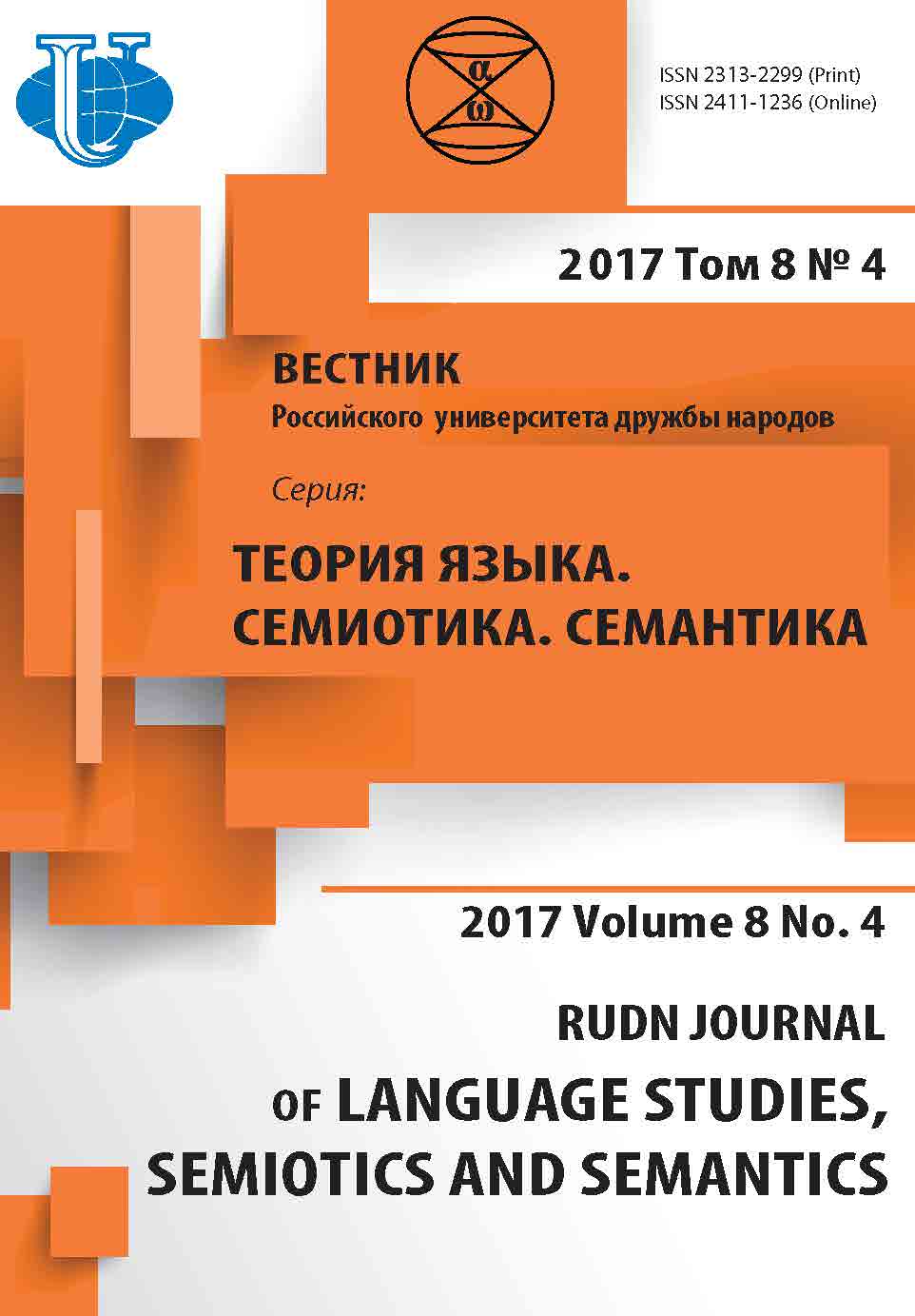ANTIPAREMIA IN RUSSIAN, FRENCH AND MALAGASY LANGUAGES
- Authors: Antsa Miangola Malala Rahadraniriana -1
-
Affiliations:
- RUDN University
- Issue: Vol 8, No 4 (2017)
- Pages: 975-984
- Section: Articles
- URL: https://journals.rudn.ru/semiotics-semantics/article/view/17976
- DOI: https://doi.org/10.22363/2313-2299-2017-8-4-975-984
Cite item
Full Text
Abstract
The proposed article presents a linguistic description of the phenomenon of antiparemia, which existence is usually ignored by researchers. At the present time, due to the development of the theory of the linguistic picture of the world, this linguistic problem becomes topical in a number of living languages of the world. The objectives of this research are: to identify the causes and mechanisms of the anti-paremia in different languages, to consider a general issue of the theory of development of antiparemia in the linguis-tic sphere, and to analyze the transformation of paremia or proverbs into antiparemia. The research material is based on the paremia and antiparemia in Russian, French and Malagasy languages. The subject of this study is the methods of transformation of the proverb. We have selected examples of proverbial sayings of the thematic group “multitude of people”, which, in our opinion, is universal in different languages. Our analysis offers theoretical and practical material for linguistic scientists, teachers, culturologists, students studying this phenomenon. Language material is collected by a massive selection of dictionaries, texts of artistic and journalistic literature. Based on the traditional social wisdom, the proverbs fix the stages of the develop-ment of the national cultural world outlook from early times, which spirit the modern generation is trying to preserve. Nevertheless, the world view changes depending on the spiritual life of the generation, causing the apparition of the phenomenon of antiparemia or antiproverbs, which existence has different mains and functions. This is a common topic and our research offers a description of the reasons for these changes.
About the authors
- Antsa Miangola Malala Rahadraniriana
RUDN University
Author for correspondence.
Email: antsaah88@gmail.com
Rahadraniriana Antsa Miangola Malala, post-graduate student of the Department of General and Russian Linguistics of the Philological Faculty at RUDN University; Scientifics interests: linguoculturology, comparative linguistics, translation theory
6, Miklukho-Maklaya str., Moscow, Russia, l l7198References
- Antonova, O.N. (2008). Antiparemia: the story of the apparition of development. Tula: edition TPGU of L.N. Tolstoi. (in Russ.).
- Arakelyan, V.D. (1963). Malagasy Language. Moscow: Vostochnaja literatura. (in Russ.).
- Bulyanin, V.P. & Butenko, I.A. (1994). Live speech. Dictionary of colloquial expressions. Moscow: PAIMS. (in Russ.).
- Valter, H.& Mokienko, V.M. (2005). The antiproverbs of the Russian people. SPb.: Publishing House “Neva”. (in Russ.).
- Valter, H. & Mokienko, V.M. (2004). Funny dictionary (antiproverbs and antiaphorisms). Moscow: Olma media group. (in Russ.).
- Dal, V.I. (1957). Proverbs of the Russian people. Moscow. (in Russ).
- Permiakov, G.L. (1988). Fundamentals of the structural paremiology. M.: Nauka. (in Russ.).
- Anscombre, J.C. (2000(). Proverbs and proverbials forms: evidential and argumentative volume 102, no 1. (in French.)
- Dumistrachel, S. (2006). Discursul repetat in textul jurnalistic — lasi, Maison d’Edition de l’Université «Alexandrue Ioan Cuza». (in English)
- Fitoussi, J.P. & Savidan, P. (2003). Inequalities. Paris: Presses Universitaires de France. (in French.)
- Houlder, J.A. (1960). Proverbs or Malagasy proverbs. Tananarive: Lutheran printing. (in Malagasy and French).
- Hrisztalina H.G. & Melita, A.V. (2014). Introduction to Paremiology: A Comprehensive Guide to Proverb Studies. Berlin. (in Eng.)
- Mieder, W. (1998). Twist Wisdom, Modern Anti-proverbs. Vermont. (in English).
- Milica, I. (2011). Proverbs et antiproverbs. Paris. (in French).
- Shapira, C. (2000). Proverb, proverbialisation and deproverbialisation. Languages, 34(139). (in French.).
- Zouogbo, J.P. (2006). The proverb between language and culture. Frankfort: Peter Lang SA. (in French.).













